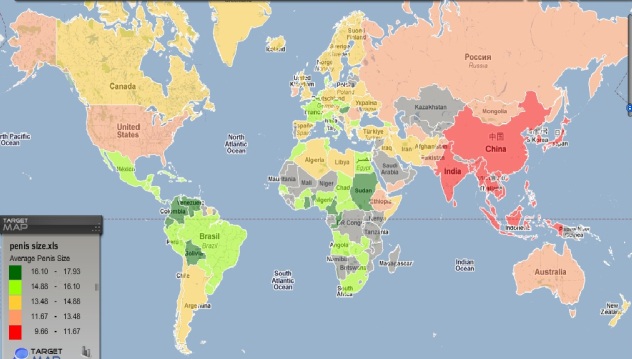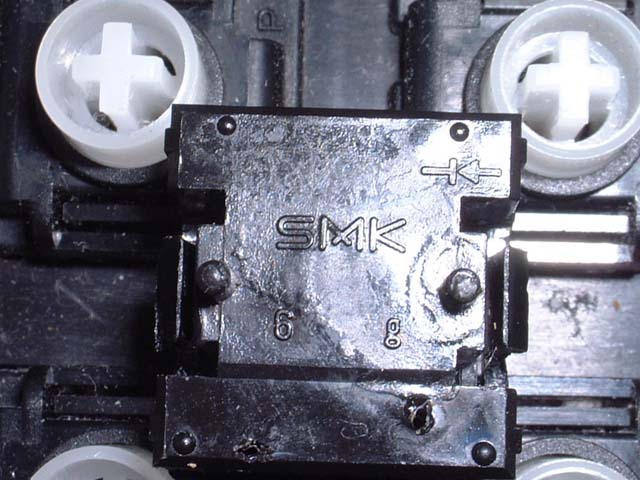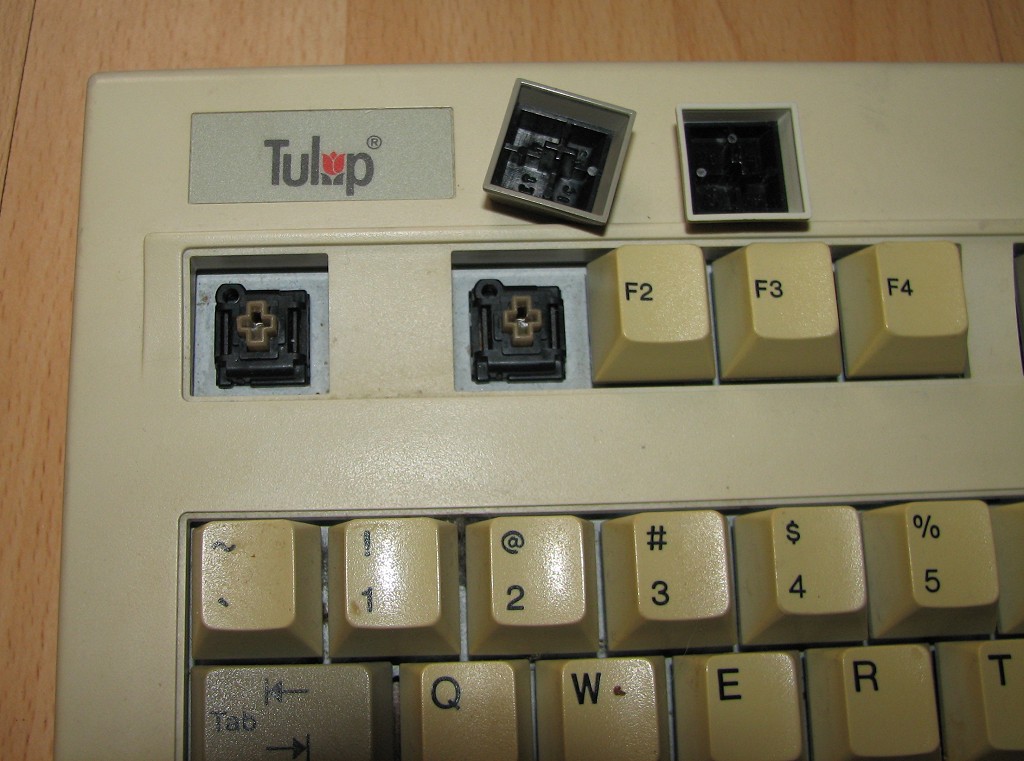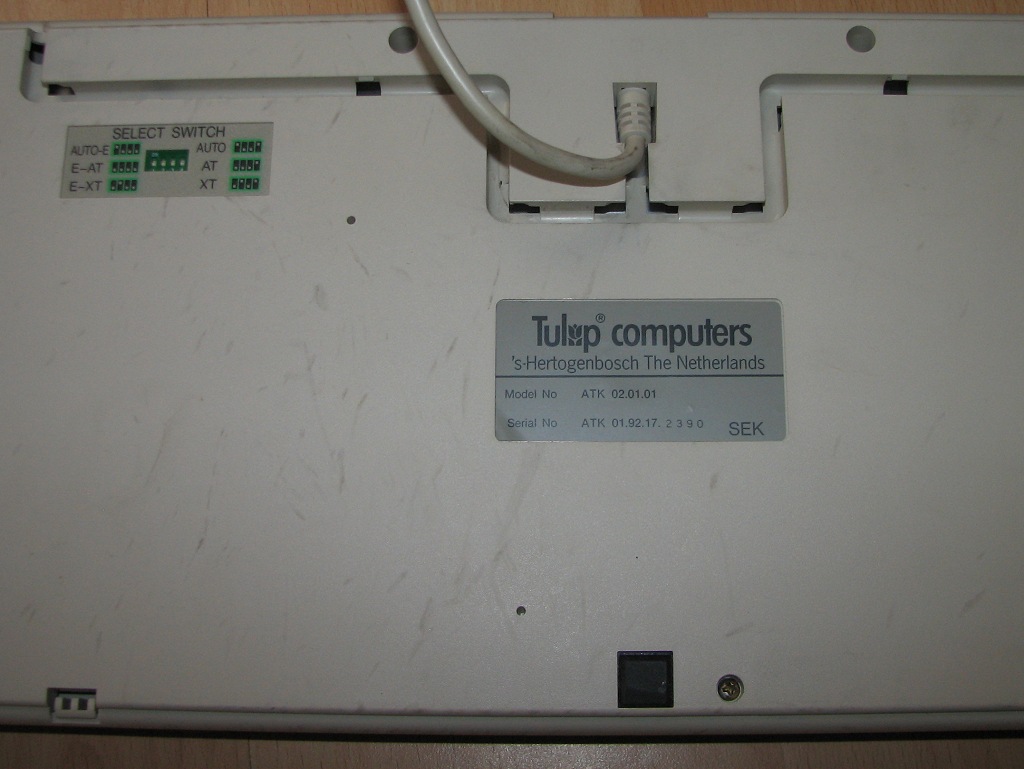Page 1 of 4
Tell me how many Euro Dimes it takes to push a key!
Posted: 16 May 2011, 01:25
by ripster
It's time to see how stiff the keys are on your keyboard!
A USA nickel weighs
5.00g according to the US mint (if you don't believe the US Government see this
pic with $10 of nickels). A EU Dime
weighs 4.1g. Just start collecting them up and balance them on a key. It's easier to glue them together into a 50g stack but not necessary if you don't have glue around.
IBM Model M - 14 USA Nickels or 70g.

I'll take the results and include them in the database of keyboard switch stiffness, I call this the
RipOmeter. This guide also includes other hints if you want to be more accurate but it's more fun if you aren't tainted by previous results.
Editors Note: Be sure to center the stack or Webwit might not accept the result.
Posted: 16 May 2011, 15:11
by The Solutor
And be sure to test at least 5 or 6 keys or the result might not accepted by The Solutor

Posted: 16 May 2011, 15:55
by kbdfr
And be sure to test with coins from different Eurozone countries, who knows what the
@^~\#}¤& use as an alloy...

Posted: 16 May 2011, 16:01
by ripster
EU dimes should be consistently 4.10.

Plus they are the right size.

Posted: 16 May 2011, 22:05
by JBert
It needs more 1g coins, otherwise you still have accuracy errors from 5 to 10g, differences between keys not withstanding...
I should check how much small euro coins weigh.
Posted: 16 May 2011, 22:27
by webwit
Why try to fix a broken method by using different coins, glued coins as suggested earlier, whatever, if you can do it right at once? Forget the ripoffmeter, it's
not accurate. Just get a scale and it doesn't matter what your weights consist of as long as it's small, and it's accurate.
Here I use a scale with 0.05g accuracy, a plastic cap, and 3 euro worth of fishing weights. Fill the cap until the key activates, then weigh the cap. Endlessly better. Most switches out there you already know the activation force, because it is published, so stacking some coins where one guy measures the Cherry Blues as 9, the other 10 and the other 11 doesn't add a single thing. Only by more accurate measurements you learn things, such as the consistency of the Cherries vs the buckling springs, or which switches are consistent no matter where you hit them, in a center or in a corner. And the actual activation force, so ripster can verify his method (otherwise he would never know if his method is or is not close and what results to pick).
Posted: 16 May 2011, 22:39
by ripster
Lead is bad for you. In fact it wouldn't surprise me if the WitOmeter is banned in California.
You COULD use Yen. I did that for a while but didn't really learn much.
Yen=1.00g

Plus I have found people on the Internet to generally be pretty stupid. In fact at least half of the people on this planet are at or below average intelligence. So simpler is better when trying to gather lots of data points.
BTW I see what you did at Reddit. I still like the comment, "WHO cares how stiff a keyboard is!".
Posted: 16 May 2011, 22:57
by webwit
You don't need lots of bad data points to get the activation force of, say, a Cherry Blue switch. Keyboards with these are known to have been sold before, and the required force at the activation point is published by Cherry and measured by better 3rd party methods. It's an exercise in futility. Also "dithering" does not apply to measurements of this nature, it's nonsense. Many bad data points don't make a good one. It's a basic error to think of the deviations as randomly distributed. You can't even measure if it is. High school material. Just as the fact at least half the data points of something don't need to be below average. Here's an example: 999 999 999 999 999 1. So there you have it, the ripoffmeter is for people who are "pretty stupid", by someone who is pretty stupid. In the end you got lots of people fiddling with coins. I guess it keeps them off the streets.
Posted: 16 May 2011, 23:25
by ripster
Lets have a contest to see who has the STIFFEST by balancing nickels.
And THEN we can try keyboards later.
Posted: 17 May 2011, 00:51
by webwit
We don't have to, the dithered results are already in.

Posted: 17 May 2011, 07:52
by Half-Saint
There are no Euro dimes, only Euro cents

Posted: 17 May 2011, 16:17
by The Solutor
webwit wrote:We don't have to, the dithered results are already in.
Being the US results averaged with black people, immigrants from Latin America and so on, would be nice to know what is the WASP's average result

Posted: 17 May 2011, 16:59
by kbdfr
Curiously enough, the central point of the map seems to be at the border between Mali and Niger, for both of which apparently no values are given. Draw your own conclusions. My guess: 42

By the way, when I was a boy, farthest peeing contests were already quite common.
I just cannot remember what they were good for.
Posted: 17 May 2011, 17:03
by ripster
Specific switches without published force charts or actuation numbers I'd like
RipOmeter results from the Deskthority.net community are:
Acer

Fujitsu Peerless

Futaba

ICLs

Marquardt

NMB Space Invaders - have always been curious that the colors mean.

Omron

pics courtesy of hisao.jp
SMKs - Whites

pics courtesy of Sandy55
SMK - Browns and other colors

Ya Sheng Buckling Spring

*** Pics from geekhack community posts unless noted
Posted: 18 May 2011, 04:26
by sixty
I can measure pretty much all of them, if I have time. Some are impossible to measure due to not being PC compatible. For example that ICL 10key pad.
Posted: 18 May 2011, 07:22
by ripster
Bottom out forces are interesting for the linear switches as well.
Posted: 18 May 2011, 10:49
by Findecanor
webwit wrote:Here I use a scale with 0.05g accuracy, a plastic cap, and 3 euro worth of fishing weights. Fill the cap until the key activates, then weigh the cap.
Better only because your weights are in smaller increments.
Anyway. What is important for how a key really
feels is not only the force it takes to activate a key, but the entire integral under the travel/force graph. That is something that you can not measure this way.
... and you shouldn't measure the keys on the bottom rows.
The keyboard should be angled so that the PCB is perfectly level. Then measure on one of the key caps that are the most level, which are usually on the top row.
Only then will the force vector -- which is the gravity vector -- be in the right direction for comparative measurements such as this.
Posted: 18 May 2011, 12:29
by webwit
Findecanor wrote:Better only because your weights are in smaller increments.
False. Up to 50 times smaller. That's the difference between a tape measure of units of 50cm or 1mm. But also more accurate because of the cap with means the force vector will always be centered, and the actual weighing afterwards instead of hoping of accurate coins which are not worn.
That is something that you can not measure this way.
True, you don't get the entire force graph and only the activation point, how observant of you.
... and you shouldn't measure the keys on the bottom rows.
False, level the keyboard.
Posted: 18 May 2011, 16:02
by ripster
Findecanor wrote:webwit wrote:Here I use a scale with 0.05g accuracy, a plastic cap, and 3 euro worth of fishing weights. Fill the cap until the key activates, then weigh the cap.
Better only because your weights are in smaller increments.
Anyway. What is important for how a key really
feels is not only the force it takes to activate a key, but the entire integral under the travel/force graph. That is something that you can not measure this way.
... and you shouldn't measure the keys on the bottom rows.
The keyboard should be angled so that the PCB is perfectly level. Then measure on one of the key caps that are the most level, which are usually on the top row.
Only then will the force vector -- which is the gravity vector -- be in the right direction for comparative measurements such as this.
All good points. All documented in the original
RipOmeter post. Please continue to give input and I will continue to address it here:
RipOmeter.
Posted: 18 May 2011, 16:03
by ripster
Findecanor wrote:webwit wrote:Here I use a scale with 0.05g accuracy, a plastic cap, and 3 euro worth of fishing weights. Fill the cap until the key activates, then weigh the cap.
Better only because your weights are in smaller increments.
Anyway. What is important for how a key really
feels is not only the force it takes to activate a key, but the entire integral under the travel/force graph. That is something that you can not measure this way.
... and you shouldn't measure the keys on the bottom rows.
The keyboard should be angled so that the PCB is perfectly level. Then measure on one of the key caps that are the most level, which are usually on the top row.
Only then will the force vector -- which is the gravity vector -- be in the right direction for comparative measurements such as this.
All good points. All documented in the original
RipOmeter post in this section:
The RipOmeter Sucks or I don't give a plug nickel for your method
.
Please continue to give input and I will continue to address it here:
RipOmeter.
The Professor will answer them there.
Do you know? Do you know?
Posted: 18 May 2011, 16:16
by ripster
Actually, that was rude. Let me copy and paste the response here (
from OCN posting, now at 7.5K views).
Posted: 19 May 2011, 14:01
by itlnstln
According to that force graph, the Kinesis Freestyle would seem very Topre-like. I doubt it would feel the same in real life, but at least it's low-force.
Posted: 19 May 2011, 16:34
by ripster
I betcha in real life it feels mushier than Pamela Anderson's boobs.
Posted: 19 May 2011, 21:08
by itlnstln
Her boobs can't be that mushy. They do have pretty substantial rubber domes in them.
Posted: 19 May 2011, 21:32
by webwit
Posted: 20 May 2011, 19:31
by ripster
SMK Whites aren't very light.
Laser keyboard - SMK whites - 70g.
 For EU members the weights are here.
For EU members the weights are here. Seem accurate. This dude got 70g on his postal scale and wikipedia gives 12x4.1 + 3x5.74 + 3.92 = 70.3g However I consider 70.3 false precision.
Wonder if Sixty's mailroom ever calibrated their scales after he weighed that Leopold?
Posted: 20 May 2011, 19:55
by webwit
It doesn't matter what you think or consider here because you have no basic knowledge of math nor will you ever provide the logic to back up your claims. Also, if you have a scale AND are using coins, you are doing it wrong. I thought the whole point was to get a faulty way to measure without the need for such extra items as the working method with smaller weights and a scale requires. It's like weighing yourself in sacks of potatoes, and then put the sacks on a scale, i.e. an exercise to get an unnecessary wildly inaccurate measurement.
Posted: 20 May 2011, 20:16
by ripster
webwit wrote:It doesn't matter what you think or consider here because you have no basic knowledge of math nor will you ever provide the logic to back up your claims. Also, if you have a scale AND are using coins, you are doing it wrong. I thought the whole point was to get a faulty way to measure without the need for such extra items as the working method with smaller weights and a scale requires. It's like weighing yourself in sacks of potatoes, and then put the sacks on a scale, i.e. an exercise to get an unnecessary wildly inaccurate measurement.
He used his postal scale to weigh the coin stack. Didn't trust Wikipedia I guess.
U Mad Bro?
Posted: 20 May 2011, 20:20
by webwit
Nope, I'm pretty happy since you proved my points by giving an unintelligent answer. Thanks bro.
Posted: 20 May 2011, 20:38
by ripster
I was pretty impressed with his postal scale.
Plus that technique removes observer bias.
















